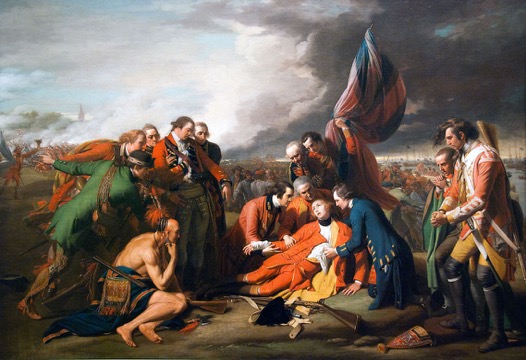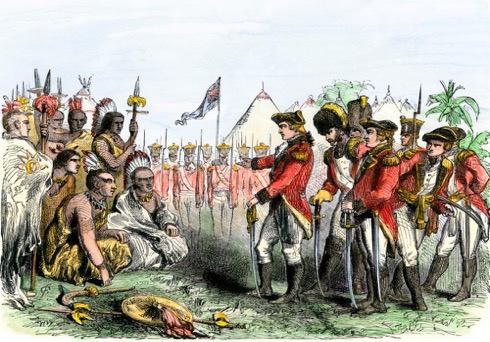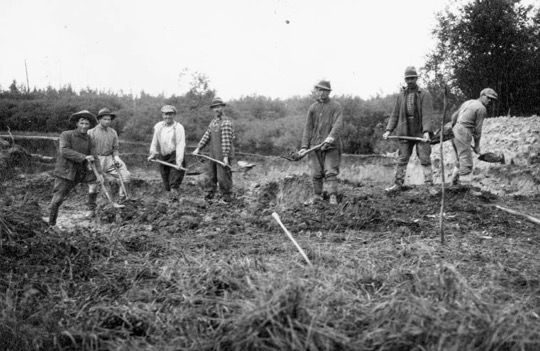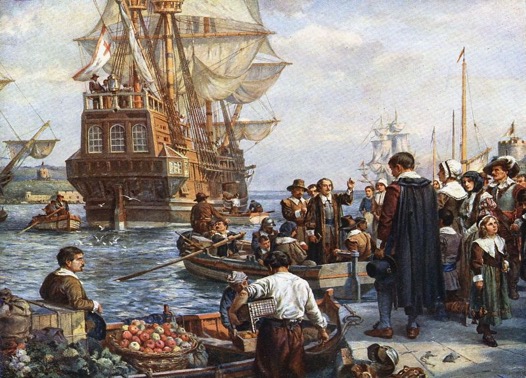Royal Proclamation of 1763
Despite British promises of Aboriginal land rights and protection, an influx of British settlers were swindling the Aboriginal peoples, taking up their lands, often even without payment. A retaliation ensued. Many tribes united under the Odawa Chief, Pontiac, and they began attacking British posts and settlements all around the Great Lakes. To appease to Aboriginal onslaught, the British King George III issued the Royal Proclamation of 1763, which, among other things, established an “Indian Territory” wherein fell most of our traditional Algonquin lands. Inside this territory our rights were recognized - settlers could not take our land without the government first making a treaty and paying for our lands and resources.
The promises made by the British in the treaties and the Royal Proclamation of 1763 were not kept. Algonquin territory was not given the protection promised. By 1800, settlers were encroaching on our land. Soon their camps and villages extended well into the Valley, as far as present day Ottawa. Things began to change dramatically for us.
With lumbermen and settlers came disease. The impact of the diseases was devastating to say the least. Whole families and communities suffered. Furthermore, the latest encroachment of lumbermen crippled our local economy. While our Chiefs sent many petitions to the British administration pleading for protection, their requests to have the treaties honoured were met with silence. The actions of the British Regime were to prove that it was more interested in accommodating new settlers than in honouring its commitments to us. As a pledge, it was quickly becoming evident that all the promises the British had made in 1763 were worthless.
Wars wage on
Within fifteen years of the French defeat, North America was the battleground for yet another war - the American Revolutionary War. Thirteen British colonies occupying the Atlantic coast joined together to assert their independence from the British Empire overseas and formed the United States of America.
In the fighting that followed, many of our ancestors fought alongside the British to resist American attempts at gaining control of the St. Lawrence Valley. The invasion of our lands was successfully repelled. But only a few years later, in 1812, the British once again called upon us to bear arms. Our Algonquin warriors assisted in fighting and preventing the American invasion of British North America. In fact, our brothers at Barriere Lake still possess a medal awarded by King George to one of their War Chief’s to honour his service during the War of 1812.
Encroaching and Settlers
After the Revolutionary War in the 1780’s, thousands of British Loyalists fled from the United States to British North America (now Canada). Waves of new settlers began to encroach on our territory and resources, moving swiftly up the Ottawa Valley from Montreal. Lumbermen arrived to take advantage of the Kitchisipi (the Ottawa River) whereby large rafts of square timber would be floated down to the port at Quebec for export to Europe.
The lumber industry moved methodically up the Kitchisipi and its tributaries. By 1845, red pine logs were being floated down the Kitchisipi from the lower reaches of Lake Timiskaming. Mattawa was becoming a major hub, supplying provisions to settlers and passers-by. Soon much of the uncharted areas of the Upper Ottawa were under investigation by surveyors sent to report on the resources and settlement potential of the territory. Eventually, a new wave of lumbermen, farmers, and surveyors followed.
Indian Reserves
In 1849-1851, two Reserves were set aside in the Ottawa River Basin: one at Maniwaki, and one at the head of Lake Timiskaming. Intended to serve as central locations where all Algonquin communities could settle, learn farming, and become “civilized”. The development was opposed by many of our ancestors. Most did not want to give up their traditional hunting grounds in exchange for these particular Reserves.
We had to take matters into our own hands. In the 1870’s, the Algonquins at Grand Lac Victoria and at Barriere Lake began clearing land at their respective localities, and they petitioned the federal government to have this land formally assigned to them as their Reserve territories. Meanwhile, the Algonquin communities living along the Kipawa River drainage, including ancestors of today’s Eagle Village and Wolf Lake First Nations, also began clearing lands around Kipawa Lake and nearby Grassy Lake. These efforts to secure Reserve lands for our people were in vain. In the end, only the communities of Timiskaming River Desert and Golden Lake were recognized by the governments of the day and granted Reserve status. The rest of us were regarded as squatters.
With an amendment to the Indian Act in 1951, the department of Indian Affairs formally recognized four Algonquin Bands living in the Kipawa region. These were the Kippewa, Brennan Lake, Hunter’s Point and Wolf Lake bands. In 1964 however, Indian Agents pressured the Brennan Lake Band and Kipawa Band to form the Eagle Village First Nation and to whom a reserve was granted. In the late 1960s, again pressured by Indian agents, the members of the Hunter’s Point band amalgamated with the Wolf Lake band to form the Wolf Lake First Nation with the promise of a reserve. We never got it. For decades, we’ve been fighting to resolve the issue of our rightful title to have defined Reserve lands. Despite the abundance of land and resources within our territory, the governments of Canada and Quebec have consistently refused to set aside a tract of reserve land for our community. Our efforts to obtain a reserve continue.





